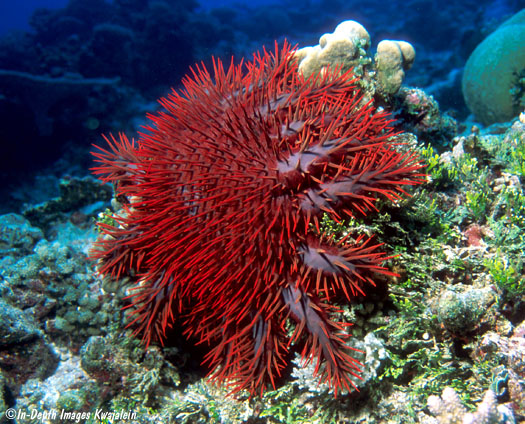
Acanthaster solaris is the large, well-known Pacific crown-of-thorns starfish. It was long accepted that the crown-of-thorns found throughout the Indo-Pacific and eastern Pacific were all A. planci but recent genetic and morphological studies indicate there are different species. The Pacific version is often referred to as A. cf solaris since it is thought to need more taxonomic attention. The crown-of-thorns eats living coral, feeding by crawling over its prey, opening its mouth wide and extruding its stomach over the coral. The coral tissue is digested in place and sucked into the star, leaving a completely white and empty coral skeleton that quickly gets covered by algae. Occasionally these stars overpopulate certain areas, forming large herds that devour much of the coral on a reef. Causes for these population blooms are still debated, but at times teams of divers have attempted to prune down the Acanthaster populations on some reefs, either by removing them from the water or injecting them with some poison that kills the entire animal. Like most seastars, just chopping them up will not help since starfish can regenerate from pieces. It has been questioned by some whether such pruning attempts do good or harm. In any case, these should not be handled unless you know what you are doing. The spines covering these stars are pointed and sharp, easily puncturing a diver's skin and delivering a venom that causes relatively intense pain. The venom also appears to have anticoagulant properties, causing puncture wounds from the star to bleed for quite a long time. These stars often hide during the day, suggesting they may be subject to predation by daytime hunters. One fish reported to eat Acanthaster is the humphead or Napoleon wrasse, Cheilinus undulatus, which apparently does not mind the spines sticking into its fleshy lips. The triton's trumpet shell, Charonia tritonis, will also eat Acanthaster, and we have seen in Hawaii the small harlequin shrimp, Hymenocera picta, riding around on a large star, chopping off a leg at a time to eat. Acanthaster can reach about half meter in diameter.

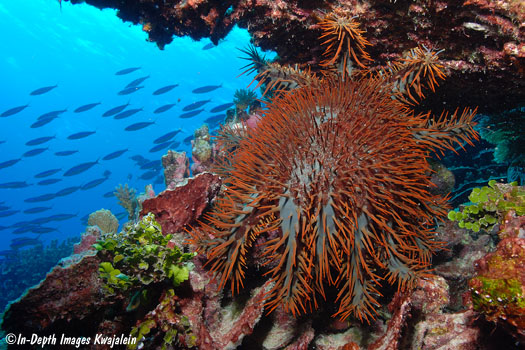
The star crawls back into a hole after eating a couple of Fungiid corals, leaving a couple of white skeletons.
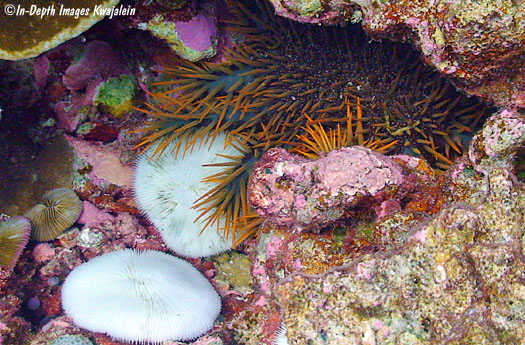
This photo taken in Hawaii shows a star wrapped around and eating a colony of branch coral.
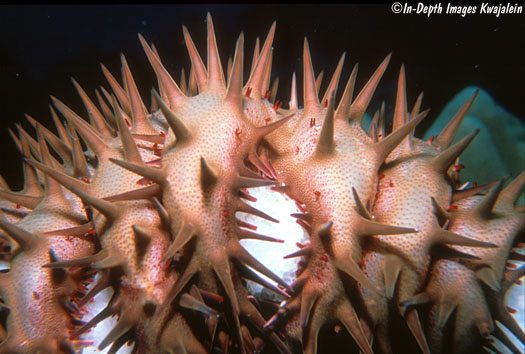
This one was pulled away from its coral meal to show the stomach that extrudes over the hard coral to digest the coral tissue.
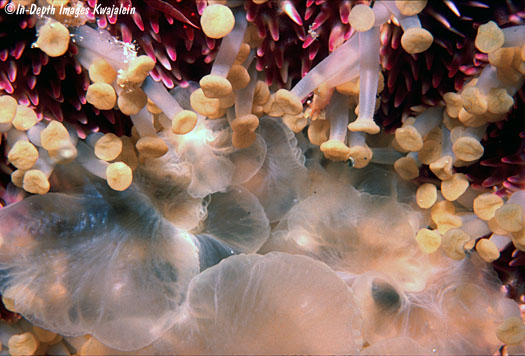
On Pocillopora.
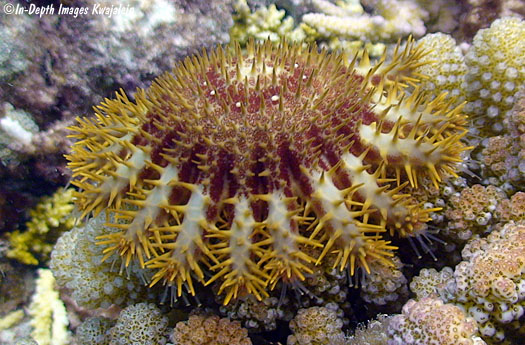
On Montipora.
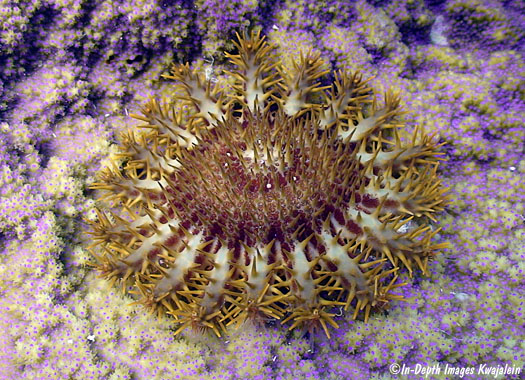
Spines and tube feet at the tip of one of the arms.
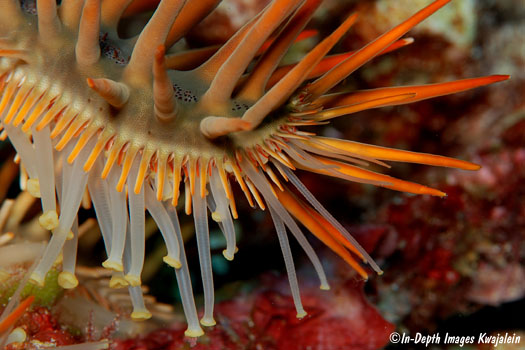
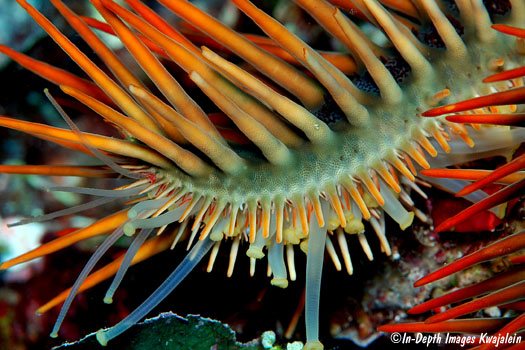
Just a small separate but still living arm in a lagoon Halimeda patch. The rest could have been consumed by a triton, Charonia tritonis, or perhaps by a large predatory fish. Occasionally you find these stars with a commensal school of small cardinalfish, Siphamia versicolor. Apparently when the rest of the star disappeared, this small group of cardinals managed to stay with the arm tip.
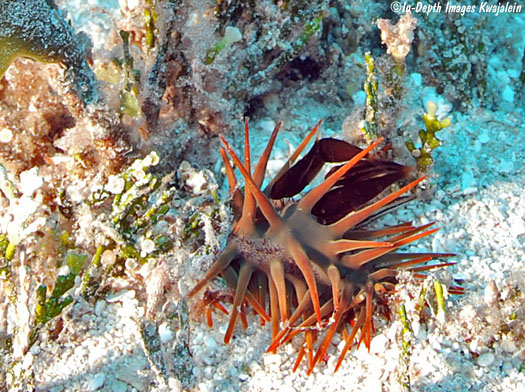
Juvenile on Montipora coral.
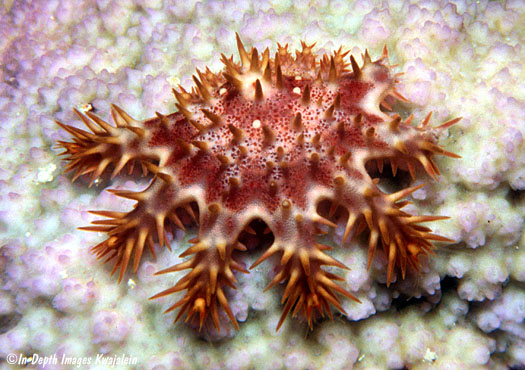
Juvenile are usually found hidden under rocks. Small specimens are probably more susceptible to predation.
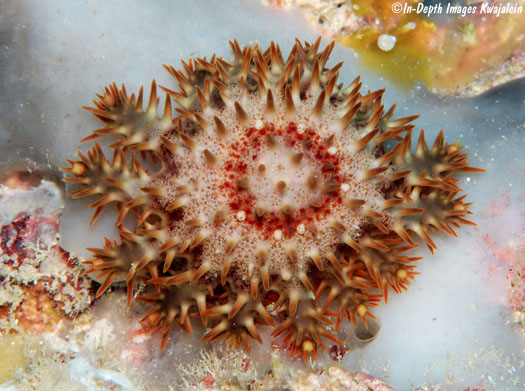
An even smaller juvenile, about 10mm in diameter.
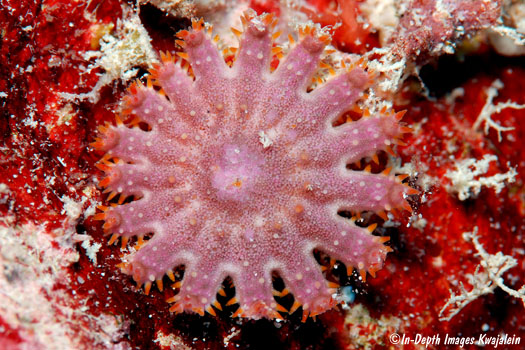
Underside of the animal in the previous photo.
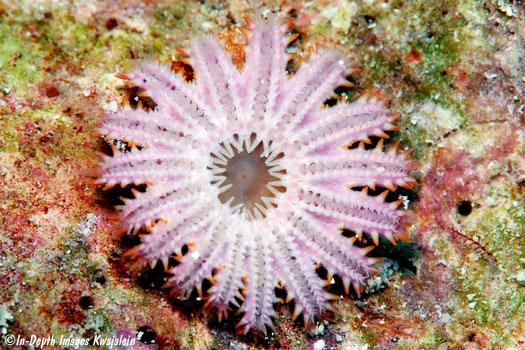
This one was really tiny.
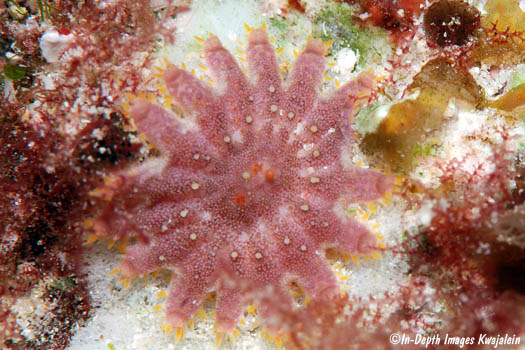
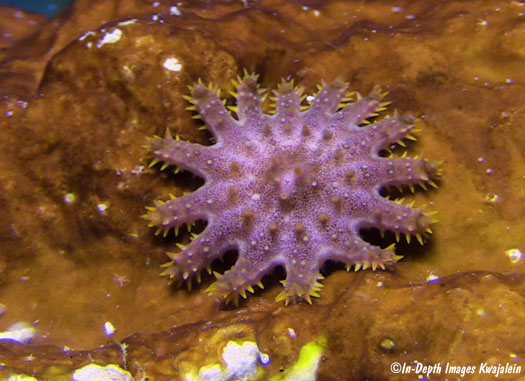
A small commensal shrimp Zenopontonia soror, living between the spines of an Acanthaster solaris.
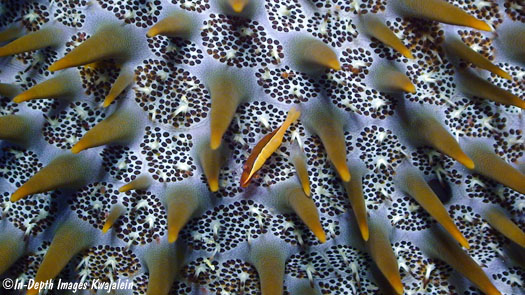
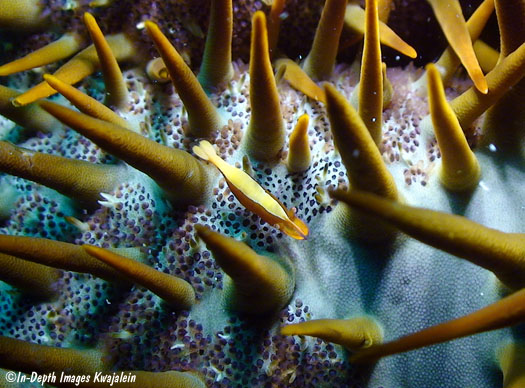
Updated 3 December 2020
Updated 8 February 2024